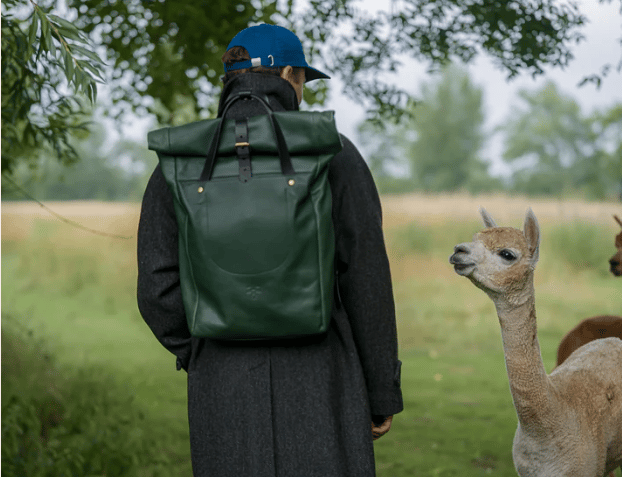Billy Tannery: Regenerative Leather Made in Britain
Sophia, The LuxEco Edit
11/5/20253 min read


Billy Tannery: British Leather Re-Engineered for Sustainable Luxury
When you think of leather-luxury, you might picture Milano ateliers, exotic hides and roaring craft traditions. But in the heart of England’s Midlands, Billy Tannery is rewriting that script. Founded to rescue waste goat skins from the food industry and hand-tan them locally, Billy Tannery bridges raw materials, craft and circular economy—making leather goods that feel both refined and responsible.
For readers of The LuxEco Edit, this is exactly the kind of brand that aligns with the “less but better” luxury ethos we champion.
Craft & Material Integrity
At the core of Billy Tannery’s philosophy is a simple question: when animals are raised for food (or culled for ecological reasons), why should their hides end up in landfill? The brand’s micro-tannery, built in the UK in 2016, was the first new goat-leather tannery in Britain in decades—harnessing local hides, using vegetable tanning methods and closing loops around waste.
Leather is tanned entirely in Britain, with goat and deer skins acquired from local suppliers who might otherwise discard them. This means each product carries a provenance: British land → British tannery → British workshop. That traceability is rare.
Moreover, the design aesthetic reflects the material’s uniqueness: instead of hiding scars and natural grain, the brand celebrates them as evidence of authenticity.
Sustainability as Practice
Billy Tannery doesn’t treat sustainability as a marketing line—it treats it as infrastructure. Their tannery recycles more than 90% of its water and uses bark extracts rather than heavy chemicals.
They’ve also expanded into deer leather—another stream of hides that might have been wasted—turning them into premium goods through what they call the “Parkland” range.
From this vantage, the brand shifts luxury away from new resources toward existing ones, refashioning waste into worth.
Signature Products & Design Philosophy
Billy Tannery’s product-line up reads like a curated edit rather than an endless collection. Their bestselling pieces include the “Rolltop Backpack” (goat leather, £725) and “The Gote” (various leathers, £475) alongside wallets, aprons and accessories.
Design is clean, unforced—panels of full-grain leather, minimal hardware, deepened patina over time. The aesthetic matches the ethos: longevity, substance, timeless utility.
Internally, the brand emphasises repair and care, encouraging customers to “buy better, keep longer”—a theme that echoes the slow-fashion mindset you already promote in your site.
👉 Related reading: Timeless Wardrobe: Redefining Modern Minimalism.
British Craft Revival & Cultural Resonance
In an article by Vogue Business, Billy Tannery was featured as part of the movement reconnecting British materials, agriculture and fashion—underlining that “Made in UK” now implies provenance, traceability and eco frameworks, not just geography.
For a UK-based audience, this is a compelling narrative: local craft, global significance.
The brand’s collaborations (with fellow UK artisans) further reinforce this cultural footprint.
Why It Matters
For those who care about what their clothes say as much as how they’re made, Billy Tannery offers a rare balance of intelligence and integrity.
Every piece reflects material awareness, transforming repurposed hides through British vegetable tanning into supple, enduring leather. It’s design that endures — built for years, not seasons — and ethics made visible, with a transparent supply chain that turns waste reduction into quiet craft revival.
This is slow fashion at its most tangible — not a trend, but a way of thinking. , Billy Tannery’s work proves that sustainability and style can share the same vocabulary. And as with Riley Studio: Waste Made Beautiful, it shows that responsibility, when designed well, becomes timeless.
Editorial Reflection: Legacy in Motion
The most radical act of luxury today might be resistance to consumption. Billy Tannery reminds us that true distinction isn’t sourced—it’s returned. Old hides become new design, British farms become material suppliers, craftsmen become custodians of time. Luxury here isn’t about what you buy—it’s about what you preserve.
For The LuxEco Edit, this brand stands as a benchmark: when craft, material and ethics align, luxury reclaims its meaning.
